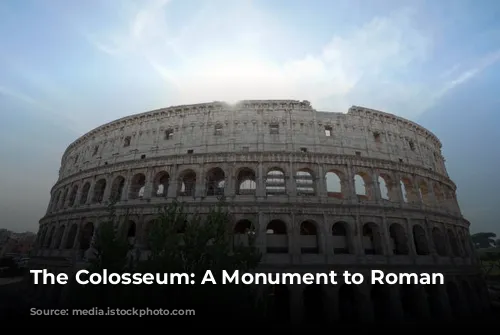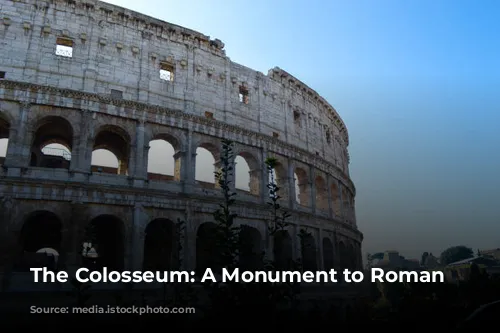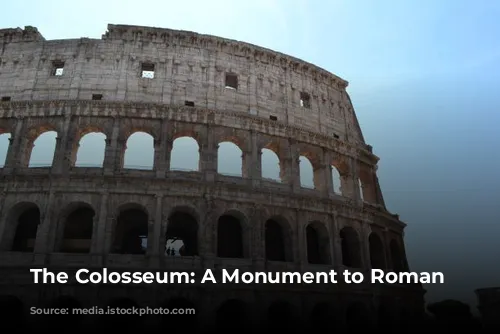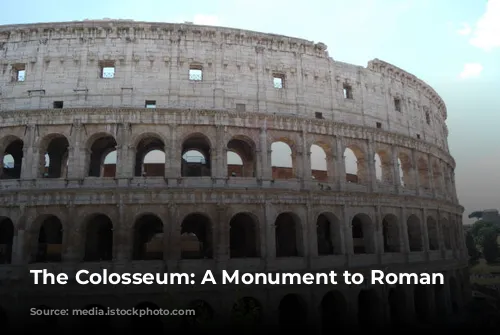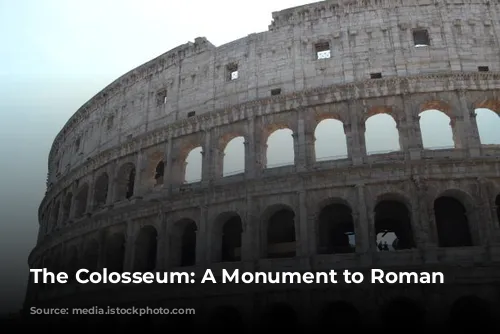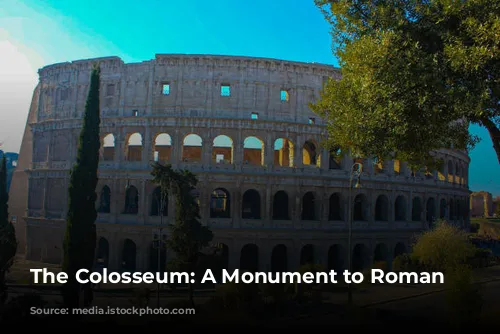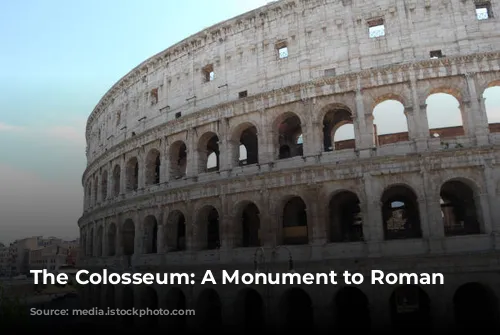The Colosseum, a name synonymous with ancient Rome, stands as a testament to the empire’s power and spectacle. Originally known as the Flavian Amphitheatre, this imposing structure was built by Emperor Vespasian of the Flavia family and inaugurated by his son Titus in 80 AD.
A Grand Opening and a Mysterious Name
The Colosseum’s inauguration was a spectacle of epic proportions, lasting a staggering one hundred days. The crowds were treated to gladiatorial combats, animal hunts, and even naumachiae, elaborate sea battles staged in the arena itself. These events were grand celebrations, showcasing the empire’s might and offering its citizens a glimpse into the world beyond their city walls.
But why is it called the Colosseum? This name, seemingly appearing out of nowhere, is first mentioned in a prophecy by the medieval monk Venerable Beda. He stated that Rome would stand as long as the Colosseum stood, and when the Colosseum falls, Rome will follow, and with it, the world.
Some believe the name comes from the “Colossus”, a giant statue of Emperor Nero that once stood near the amphitheatre. This statue was over 35 meters tall, but was destroyed long ago, leaving only the name behind.
A Marvel of Engineering
The Colosseum is an impressive feat of Roman engineering. Built entirely from travertine stone, it stands as an elliptical structure, designed to accommodate a vast number of spectators. Its four levels were adorned with arches, many of which were decorated with statues.
It’s astounding to consider that such an imposing structure was built in less than ten years. This feat was achieved thanks to the Romans’ mastery of the arch, a structural element that allowed them to distribute weight efficiently. The Colosseum can be seen as a series of aqueducts stacked on top of one another, demonstrating the strength and versatility of this architectural technique.
A Legacy of Spectacle and Destruction
Over time, the Colosseum, like many Roman structures, fell into disrepair. In the Middle Ages, it was stripped of its precious marble, lead, and iron by popes who used the materials to construct buildings like Barberini Palace and St. Peter’s Basilica.
The Colosseum could hold up to seventy thousand spectators, all eager to witness the various shows. The seating was organized according to social status, with the common people seated in the upper tiers, while senators, vestals, and the emperor occupied the prime seats.
Like modern sports stadiums, the Colosseum featured a velarium, a massive linen canopy that shielded spectators from the sun. Operated by one hundred sailors from the Imperial fleet, this ingenious system of ropes, winches, and poles provided shade for the entire arena.
The Games of the Colosseum
The arena itself was the stage for a variety of spectacles. The underground cellars housed the machinery used to create the shows, including lifts and hoists used to bring animals and gladiators into the arena with dramatic flair.
The shows ranged from brutal animal hunts to gladiatorial combats, and even unique performances like elephants trained to write. Despite popular belief, the Colosseum was not used to kill Christians as a form of entertainment.
The gladiators themselves were a fascinating group. Often, they were prisoners of war who had the choice to fight in the arena or become slaves. Some were simply paupers seeking fame and fortune. Their profession earned them great popularity, especially with the women who would pay handsomely for a night with their heroes.
The fights were brutal and bloody, with spectators cheering on their favorites. The emperor held the ultimate power, deciding whether a defeated gladiator lived or died. The winners were showered with golden palm leaves and wealth. The blood of the gladiators was even thought to have healing powers.
A Testament to Time and Change
The Colosseum, once a symbol of Roman power and entertainment, has witnessed the rise and fall of empires. Now, it stands as a sacred monument dedicated to the Passion of Christ. Its past is as complex as its present, a reminder of both the grandeur and the barbarity of the ancient world.
Today, the Colosseum stands as a silent witness to a bygone era, a place where history comes to life. Visiting the Colosseum is a journey into the heart of ancient Rome, a chance to connect with the ghosts of the past and understand the lasting legacy of this iconic structure.
